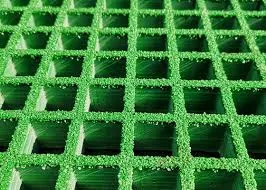
-
 Afrikaans
Afrikaans -
 Albanian
Albanian -
 Amharic
Amharic -
 Arabic
Arabic -
 Armenian
Armenian -
 Azerbaijani
Azerbaijani -
 Basque
Basque -
 Belarusian
Belarusian -
 Bengali
Bengali -
 Bosnian
Bosnian -
 Bulgarian
Bulgarian -
 Catalan
Catalan -
 Cebuano
Cebuano -
 China
China -
 China (Taiwan)
China (Taiwan) -
 Corsican
Corsican -
 Croatian
Croatian -
 Czech
Czech -
 Danish
Danish -
 Dutch
Dutch -
 English
English -
 Esperanto
Esperanto -
 Estonian
Estonian -
 Finnish
Finnish -
 French
French -
 Frisian
Frisian -
 Galician
Galician -
 Georgian
Georgian -
 German
German -
 Greek
Greek -
 Gujarati
Gujarati -
 Haitian Creole
Haitian Creole -
 hausa
hausa -
 hawaiian
hawaiian -
 Hebrew
Hebrew -
 Hindi
Hindi -
 Miao
Miao -
 Hungarian
Hungarian -
 Icelandic
Icelandic -
 igbo
igbo -
 Indonesian
Indonesian -
 irish
irish -
 Italian
Italian -
 Japanese
Japanese -
 Javanese
Javanese -
 Kannada
Kannada -
 kazakh
kazakh -
 Khmer
Khmer -
 Rwandese
Rwandese -
 Korean
Korean -
 Kurdish
Kurdish -
 Kyrgyz
Kyrgyz -
 Lao
Lao -
 Latin
Latin -
 Latvian
Latvian -
 Lithuanian
Lithuanian -
 Luxembourgish
Luxembourgish -
 Macedonian
Macedonian -
 Malgashi
Malgashi -
 Malay
Malay -
 Malayalam
Malayalam -
 Maltese
Maltese -
 Maori
Maori -
 Marathi
Marathi -
 Mongolian
Mongolian -
 Myanmar
Myanmar -
 Nepali
Nepali -
 Norwegian
Norwegian -
 Norwegian
Norwegian -
 Occitan
Occitan -
 Pashto
Pashto -
 Persian
Persian -
 Polish
Polish -
 Portuguese
Portuguese -
 Punjabi
Punjabi -
 Romanian
Romanian -
 Russian
Russian -
 Samoan
Samoan -
 Scottish Gaelic
Scottish Gaelic -
 Serbian
Serbian -
 Sesotho
Sesotho -
 Shona
Shona -
 Sindhi
Sindhi -
 Sinhala
Sinhala -
 Slovak
Slovak -
 Slovenian
Slovenian -
 Somali
Somali -
 Spanish
Spanish -
 Sundanese
Sundanese -
 Swahili
Swahili -
 Swedish
Swedish -
 Tagalog
Tagalog -
 Tajik
Tajik -
 Tamil
Tamil -
 Tatar
Tatar -
 Telugu
Telugu -
 Thai
Thai -
 Turkish
Turkish -
 Turkmen
Turkmen -
 Ukrainian
Ukrainian -
 Urdu
Urdu -
 Uighur
Uighur -
 Uzbek
Uzbek -
 Vietnamese
Vietnamese -
 Welsh
Welsh -
 Bantu
Bantu -
 Yiddish
Yiddish -
 Yoruba
Yoruba -
 Zulu
Zulu
frp chimney construction and installation for industrial and ...
FRP Chimney Construction and Installation for Industrial Applications
Fiberglass Reinforced Plastic (FRP) chimneys have gained significant popularity in industrial settings due to their lightweight nature, exceptional corrosion resistance, and ease of installation. The construction and installation of FRP chimneys are essential processes that cater to various industries, including power generation, chemical manufacturing, and waste management. This article will delve into the advantages, construction techniques, and installation processes associated with FRP chimneys.
One of the primary benefits of FRP chimneys is their resistance to corrosive environments. Traditional materials like concrete and steel can deteriorate over time when exposed to acidic or alkaline emissions. In contrast, FRP chimneys maintain structural integrity and performance, significantly extending their lifespan and reducing maintenance costs. Their lightweight design also facilitates easier transportation and handling on-site, resulting in lower labor costs and reduced construction time.
The construction of FRP chimneys typically involves several key steps. Initially, a thorough assessment of the site and the specific requirements of the project is conducted. This includes evaluating factors such as emissions composition, height requirements, and load-bearing capabilities. Based on this assessment, the design of the chimney can be finalized, ensuring that it meets both regulatory standards and operational needs.
frp chimney construction and installation for industrial and ...

Once the design is complete, the fabrication of the FRP components begins. Advanced manufacturing techniques, such as resin transfer molding and filament winding, are employed to create the chimney sections. These methods ensure uniform quality and strength throughout the structure. The sections are then assembled at the manufacturing facility or transported to the site for on-site assembly.
Installation of FRP chimneys is a critical phase that requires careful planning. The lightweight nature of FRP allows for the use of cranes and minimal heavy equipment, making the installation process quicker and more efficient. A detailed installation plan is essential to ensure proper alignment, stability, and secure connections to existing systems, such as flue gas ducts.
After installation, the chimney is subjected to rigorous testing to confirm its structural integrity and ensure that it meets all operational specifications. This includes checks for leaks and assessments of thermal performance.
In conclusion, FRP chimneys present a modern solution for industrial ventilation needs, combining durability, efficiency, and cost-effectiveness. With proper construction and installation practices, these chimneys can offer reliable performance in even the most challenging environments, ultimately contributing to improved air quality and regulatory compliance. As industries continue to prioritize sustainable practices, the adoption of FRP technology is likely to expand, positioning it as a leading choice for future projects.
Latest news
-
Exploring the Benefits of Top Hammer Drifter Rods for Enhanced Drilling PerformanceNewsJun.10,2025
-
High-Precision Fiberglass Winding Machine for GRP/FRP Pipe Production – Reliable & Efficient SolutionsNewsJun.10,2025
-
FRP Pipes & Fittings for Shipbuilding - Corrosion-Resistant & LightweightNewsJun.09,2025
-
Premium FRP Flooring Solutions Durable & Slip-ResistantNewsJun.09,2025
-
Premium Fiberglass Rectangular Tanks Durable & Lightweight SolutionNewsJun.09,2025
-
Tapered Drill String Design Guide Durable Performance & UsesNewsJun.09,2025









